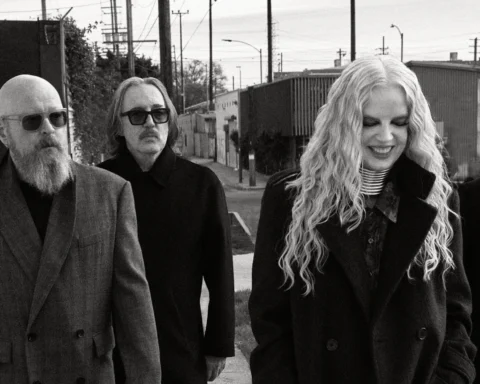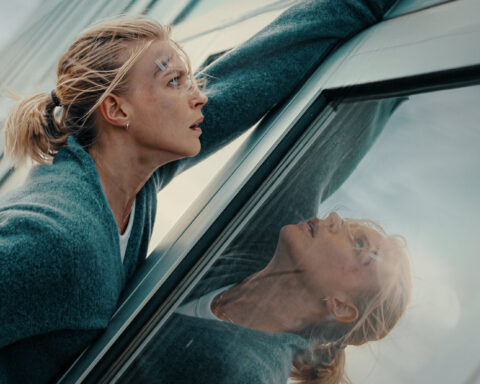Vera Wang’s journey in the fashion industry is nothing short of fascinating. Born on June 27, 1949, in New York City to Chinese immigrants, Wang’s early life was imbued with cultural richness and a strong sense of ambition. Initially, she dedicated herself to the world of figure skating, aspiring to compete at the Olympic level. Wang trained rigorously, demonstrating a level of determination that would later become a hallmark of her career. Despite her relentless efforts, she found herself just shy of making the Olympic team, prompting a critical moment of reevaluation in her life.
Although Wang’s ambitions in figure skating were never fully realized, her experiences in the sport played a vital role in shaping her future. The discipline, grace, and meticulous attention to detail required in skating seamlessly translated into her later work in fashion. Anecdotes from her early days often paint a picture of a young woman who was both passionate and unwavering in her pursuits. It was this tenacity that propelled her to explore new avenues beyond the rink.
As Wang pivoted away from skating, her interest in fashion began to blossom. The movement and flow integral to a skater’s performance found new life in her couture creations. This unique perspective imbued her designs with a sense of elegance and fluidity, setting her apart in the world of fashion. The seeds of her future success were sown during these formative years, laying the foundation for her to become a revered figure in haute couture.
Through this journey, Vera Wang has proven that the path to success is rarely linear. Her early aspirations and the trials she faced have only enriched her creative genius, allowing her to bring a distinctive artistry to her fashion designs. In every dress she creates, one can glimpse the shadows of a skater’s grace, a testament to her unique and compelling journey.

A Vogue Veteran: From Receptionist to Senior Fashion Editor
Vera Wang’s astonishing journey in the world of haute couture began after she decided to relinquish her aspirations of becoming an Olympic figure skater. She channeled her focus into academics, attending the University of Paris and subsequently earning an art history degree from Sarah Lawrence College. This academic background provided her with a rich tapestry of cultural insights and aesthetic sensibilities that would become fundamental in her career.
Upon completing her education, Wang embarked on her fashion career at Vogue magazine, starting in a seemingly humble position as a receptionist. Her dedication, coupled with an astute sense of style, soon set her apart from her peers. She rapidly ascended the ranks at Vogue, ultimately achieving the noteworthy title of Senior Fashion Editor. At that time, her appointment marked her as the youngest individual to ever hold such an esteemed position at the publication.
Over her 17-year tenure at Vogue, Wang’s role was pivotal. She was deeply involved in curating and crafting editorial content that not only captured contemporary fashion trends but also foresaw future couture movements. Her editorial prowess and innovative vision earned her significant recognition within the fashion community. She demonstrated an uncanny ability to blend historical art perspectives with modern fashion, thus creating timeless and captivating editorials. Her knack for identifying nascent trends and nurturing them into full-fledged fashion statements became a hallmark of her career.
Her experiences and successes at Vogue laid an indelible groundwork for Wang’s future in fashion. The expertise she garnered and the industry connections she established were instrumental when she made the bold decision to leave Vogue and focus on her own fashion label. Her progression from receptionist to a revered figure in fashion editing underscores the journey of a woman whose passion and skill were destined to make her a global fashion icon.

Entrepreneurial Leap: Founding the Vera Wang Brand
Vera Wang’s transition from a celebrated magazine editor to an illustrious designer occurred almost serendipitously. At the age of 40, faced with the frustration of finding the perfect bridal gown for her own wedding, Wang took matters into her own hands. Dissatisfied with the market offerings, she decided to design her own wedding dress, a decision that marked a pivotal turning point in her career. This moment of personal discontent catalyzed her to found her own bridal wear line in 1990. Overcoming various challenges and armed with a visionary zeal, she unveiled her first boutique in the prestigious Carlyle Hotel in New York City.
Wang’s entrepreneurial journey was not without its humorous anecdotes. One might find it amusing that despite her formidable background in fashion journalism, she initially waded into the business waters with a certain naïveté. Her candid reflections on the early days often include witty remarks on her lack of business knowledge juxtaposed with the undeniable impact her designs have had on bridal fashion.


Her creations redefined the wedding attire landscape, blending traditional elements with contemporary flair. Vera Wang’s ability to innovate while maintaining an air of timeless elegance earned her the nickname ‘Queen of Bridal Couture.’ Her designs, characterized by meticulous attention to detail, luxurious fabrics, and an avant-garde approach, broke away from conventional bridal norms. Each dress exudes a unique combination of sophistication and modernity, captivating brides around the globe.
Today, Vera Wang’s legacy extends far beyond her boutique at the Carlyle Hotel. Her name is synonymous with bridal fashion excellence, inspiring countless aspiring designers and setting new standards in the industry. The brand’s evolution from a single bridal line to a global fashion powerhouse highlights the timeless elegance and innovative spirit that Wang has so masterfully championed.
In the early stages of her career, Vera Wang became synonymous with ethereal bridal gowns, revolutionizing the bridal fashion industry with her distinctive blend of modernity and classic elegance. However, Vera Wang’s visionary approach didn’t stop at bridal wear. She expanded her brand into ready-to-wear, lifestyle products, and fragrances, solidifying her status as an influential figure in the broader fashion realm.
Vera Wang’s ready-to-wear collections are celebrated for their innovative designs that effortlessly meld contemporary trends with timeless elements. Her creations frequently grace red carpets and major fashion runways around the globe, showcasing an array of sophisticated, yet accessible, garments. The seamless integration of avant-garde silhouettes with traditional materials epitomizes Wang’s dexterity in balancing the old with the new, captivating fashion enthusiasts worldwide.
Anecdotes about celebrity clients further underscore Wang’s sartorial impact. Notable personalities such as Michelle Obama, Halle Berry, and Lupita Nyong’o have donned Vera Wang dresses, often heralding their appearances as fashion highlights. These moments of high fashion aren’t mere fleeting instances; they exemplify Wang’s ability to craft garments that resonate on both an individual and cultural level.




Moreover, Vera Wang’s collaborations with other designers and brands reflect her versatility and willingness to innovate. Partnership ventures, such as her collection with Kohl’s, democratized couture by making high-end fashion accessible to a broader audience. Simultaneously, her fragrance line brought her unique aesthetic into personal and intimate realms, showcasing her talent’s breadth.
Through these diverse pursuits, Vera Wang has demonstrated resilience and an uncanny ability to adapt to the ever-evolving fashion landscape. Her unwavering commitment to design excellence and adaptability ensures her enduring legacy not just as a designer of bridal gowns but as a comprehensive fashion icon. Her influence permeates beyond haute couture, encapsulating a lifestyle that marries elegance with innovation, continually inspiring aspiring designers and fashion aficionados alike.






